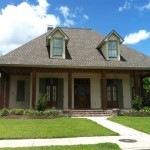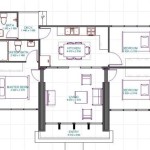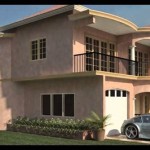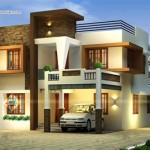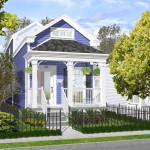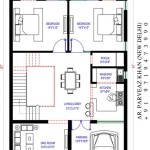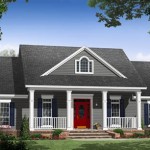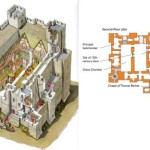10,000 Sq Foot House Plans: Design Considerations and Architectural Possibilities
The prospect of designing and constructing a 10,000 square foot house presents a unique set of challenges and opportunities. Such a substantial footprint allows for expansive living spaces, specialized rooms, and a high degree of customization, but it also necessitates meticulous planning and a thorough understanding of architectural principles, material selection, and regulatory compliance. This article will explore various aspects of 10,000 sq foot house plans, focusing on key design considerations, functional possibilities, and factors influencing cost and construction.
A house of this size transcends the typical residential dwelling and becomes a statement of architectural vision. It requires a sophisticated approach that considers not only the immediate needs of the occupants but also the long-term implications for energy efficiency, maintenance, and potential resale value. The design process should involve close collaboration between the homeowner, architect, interior designer, and contractor to ensure that the final product aligns with the homeowner's lifestyle, aesthetic preferences, and budget constraints.
The scale of a 10,000 sq foot house demands careful consideration of its environmental impact. Sustainable design principles, such as passive solar heating and cooling, rainwater harvesting, and the use of eco-friendly materials, can help minimize the building's carbon footprint and reduce operating costs. Furthermore, the integration of smart home technology can enhance energy efficiency and provide greater control over lighting, temperature, and security systems.
Key Considerations in Developing 10,000 Sq Foot House Plans
Creating effective 10,000 sq foot house plans involves navigating several key considerations. These include space allocation, flow and circulation, privacy and zoning, architectural style, and compliance with local building codes and regulations.
Space Allocation and Functionality: The first step in developing 10,000 sq foot house plans is to determine the desired allocation of space. This involves creating a detailed list of all the rooms and areas that will be included in the house, as well as their approximate sizes. Common features in homes of this size include multiple bedrooms and bathrooms, a large kitchen with a separate pantry, a formal dining room, a living room, a home office, a library, a media room, a game room, a gym, and potentially a home theater. The inclusion of specialized spaces such as an art studio, a wine cellar, or an indoor swimming pool is also a possibility. Careful consideration should be given to the specific needs and interests of the occupants to ensure that the house is tailored to their lifestyle.
The functionality of each space should also be carefully considered. For example, the kitchen should be designed with efficient workflow in mind, with ample counter space, storage, and high-end appliances. Bathrooms should be designed for comfort and luxury, with features such as soaking tubs, walk-in showers, and heated floors. The layout of the house should also promote easy navigation and accessibility, with wide hallways and doorways.
Flow and Circulation: The flow and circulation within a 10,000 sq foot house are crucial for creating a comfortable and functional living environment. The layout should be designed to facilitate easy movement between different areas of the house, while also maintaining a sense of privacy and separation between different zones. The use of open floor plans can create a sense of spaciousness and connectivity, but it is important to carefully consider the placement of furniture and other elements to define distinct living areas. Hallways should be wide and well-lit, and staircases should be designed for both aesthetic appeal and ease of use. The placement of entrances and exits should also be carefully considered to provide convenient access to different areas of the house and the surrounding property.
The connection between indoor and outdoor spaces is also an important consideration. Large windows, sliding glass doors, and outdoor patios can create a seamless transition between the interior and exterior, allowing for natural light and ventilation. Outdoor living spaces, such as patios, decks, and porches, can also extend the usable living area of the house and provide opportunities for relaxation and entertainment.
Privacy and Zoning: In a large house, it is important to create distinct zones for different activities and to ensure that each zone offers an appropriate level of privacy. For example, bedrooms should be located in a quiet area of the house, away from noisy living areas. Home offices should be designed to minimize distractions and provide a productive work environment. Entertainment areas, such as media rooms and game rooms, should be located in areas where noise will not disturb other occupants. The separation of these zones can be achieved through the strategic placement of walls, doors, and hallways.
The design should also consider the privacy of individual family members. Each bedroom should have its own private bathroom and closet space. Master suites should be designed as a retreat, with features such as a sitting area, a fireplace, and a luxurious bathroom. The location of guest rooms should also be considered to provide privacy for visitors.
Architectural Style: The architectural style of a 10,000 sq foot house should reflect the homeowner's personal taste and the surrounding environment. A wide range of architectural styles are possible, from traditional styles such as Mediterranean, Colonial, and Tudor to modern styles such as contemporary, minimalist, and mid-century modern. The choice of architectural style will influence the overall look and feel of the house, as well as the materials and construction techniques that are used. Regardless of the chosen style, the design should be cohesive and well-executed, with attention to detail and a focus on quality craftsmanship.
The architectural style should also be compatible with the surrounding landscape. The house should be designed to blend seamlessly with its surroundings, taking advantage of natural features such as trees, hills, and lakes. The use of natural materials, such as stone, wood, and brick, can help to create a sense of harmony with the environment. The orientation of the house should also be carefully considered to maximize natural light and ventilation.
Compliance with Building Codes and Regulations: All 10,000 sq foot house plans must comply with local building codes and regulations. These codes and regulations cover a wide range of aspects, including structural integrity, fire safety, energy efficiency, and accessibility. It is essential to work with a qualified architect and contractor who are familiar with the local building codes and regulations to ensure that the house meets all requirements. Obtaining the necessary permits and approvals can be a lengthy and complex process, so it is important to start early and to be prepared to provide detailed documentation and plans.
Building codes and regulations may also vary depending on the location of the property. For example, coastal areas may have stricter requirements for wind resistance and flood protection. Areas with seismic activity may have stricter requirements for earthquake resistance. It is important to be aware of these specific requirements and to incorporate them into the design of the house.
Functional Possibilities in Large-Scale House Designs
The expansive space offered by a 10,000 sq foot house allows for a multitude of functional possibilities. These can include specialized rooms for hobbies and interests, advanced home automation systems, and luxurious amenities that enhance the overall living experience.
Specialized Rooms and Features: Beyond the standard living spaces, a house of this size can accommodate a variety of specialized rooms and features tailored to the homeowner's specific interests and hobbies. A home theater, equipped with state-of-the-art audio and visual equipment, provides a private and immersive entertainment experience. A dedicated game room can offer a space for recreation and relaxation, with features such as a pool table, a foosball table, and a video game console. An art studio or workshop can provide a creative space for artists and craftspeople. A wine cellar can offer a temperature-controlled environment for storing and displaying a collection of wines. An indoor swimming pool or spa can provide a year-round recreational and fitness option.
These specialized rooms can be designed to reflect the homeowner's personal style and preferences. For example, a home theater can be designed with a classic Hollywood theme or a modern, minimalist aesthetic. An art studio can be designed with ample natural light and workspace. A wine cellar can be designed with rustic stone walls and custom-built racking.
Advanced Home Automation Systems: Integrating advanced home automation systems can significantly enhance the functionality and convenience of a 10,000 sq foot house. These systems can control a wide range of functions, including lighting, temperature, security, entertainment, and appliances. Lighting controls can be programmed to automatically adjust based on time of day or occupancy. Temperature controls can be programmed to maintain a consistent temperature throughout the house, while also optimizing energy efficiency. Security systems can provide comprehensive monitoring and protection against intrusion and fire. Entertainment systems can be integrated to provide seamless access to music, movies, and other media throughout the house. Smart appliances can be controlled remotely and can provide valuable information about energy consumption and maintenance needs.
These home automation systems can be controlled through a central control panel, a smartphone app, or voice commands. This allows homeowners to easily manage their home from anywhere in the world. The systems can also be programmed to automate routine tasks, such as turning on lights at dusk or watering the lawn. This can save time and energy and can make the house more comfortable and convenient to live in.
Luxurious Amenities: A 10,000 sq foot house can incorporate a variety of luxurious amenities that enhance the overall living experience. These amenities can include features such as a gourmet kitchen with high-end appliances, spa-like bathrooms with soaking tubs and rain showers, custom-built closets with ample storage space, and outdoor living areas with fireplaces and outdoor kitchens. A gourmet kitchen can be designed with professional-grade appliances, such as a six-burner range, a double oven, and a built-in refrigerator. Spa-like bathrooms can be designed with luxurious materials, such as marble and limestone. Custom-built closets can be designed to maximize storage space and to organize clothing and accessories. Outdoor living areas can be designed to provide a comfortable and inviting space for relaxation and entertainment.
These luxurious amenities can be customized to meet the specific needs and preferences of the homeowner. For example, a gourmet kitchen can be designed to accommodate the needs of a professional chef. Spa-like bathrooms can be designed to provide a relaxing and rejuvenating experience. Custom-built closets can be designed to accommodate a large wardrobe. Outdoor living areas can be designed to provide a space for entertaining guests.
Factors Influencing Cost and Construction of Large Houses
Building a 10,000 sq foot house involves significant financial investment and requires careful management of construction processes. Several factors can influence the overall cost and timeline of the project, including material selection, labor costs, site conditions, and unforeseen challenges.
Material Selection: The choice of materials can have a significant impact on the cost and quality of a 10,000 sq foot house. High-end materials, such as exotic hardwoods, natural stone, and custom-made fixtures, can add to the overall cost of the project. However, these materials can also enhance the aesthetic appeal and durability of the house. The use of sustainable materials, such as recycled content and locally sourced products, can also add to the cost, but can also reduce the environmental impact of the house. It is important to carefully consider the cost, quality, and sustainability of all materials before making a selection.
The selection of materials should also be consistent with the architectural style of the house. For example, a traditional-style house may use materials such as brick, wood, and stone, while a modern-style house may use materials such as glass, steel, and concrete. The materials should also be appropriate for the climate and location of the house. For example, a house in a hot climate may use materials that are resistant to heat and humidity, while a house in a cold climate may use materials that provide good insulation.
Labor Costs: Labor costs can account for a significant portion of the total cost of building a 10,000 sq foot house. The cost of labor can vary depending on the location, the skill level of the workers, and the complexity of the project. It is important to obtain multiple bids from qualified contractors to ensure that you are getting a fair price. It is also important to carefully review the contractor's qualifications and experience before hiring them. A qualified contractor will have the necessary skills and experience to complete the project on time and within budget.
The cost of labor can also be influenced by the scheduling of the project. For example, if the project is scheduled during a busy construction season, labor costs may be higher. It is important to plan the project carefully to avoid scheduling conflicts and to minimize labor costs.
Site Conditions: The condition of the building site can also have a significant impact on the cost and timeline of the project. Difficult site conditions, such as sloped terrain, unstable soil, or the presence of underground utilities, can add to the cost of site preparation and foundation construction. It is important to conduct a thorough site assessment before starting the project to identify any potential challenges. A geotechnical engineer can be hired to assess the soil conditions and to recommend appropriate foundation solutions. An arborist can be hired to assess the health and condition of any trees on the property. A surveyor can be hired to determine the property boundaries and to identify any easements or restrictions.
The location of the site can also influence the cost of the project. For example, a site in a remote area may be more expensive to access and may require additional transportation costs for materials and labor. A site in an urban area may be subject to stricter building codes and regulations, which can add to the cost of the project.
Unforeseen Challenges: Despite careful planning, unforeseen challenges can arise during the construction of a 10,000 sq foot house. These challenges can include unexpected weather events, material shortages, and unexpected problems with the site conditions. It is important to have a contingency plan in place to address these challenges. The contingency plan should include a financial reserve to cover unexpected costs and a plan for dealing with potential delays. It is also important to maintain open communication with the contractor and to work together to find solutions to any problems that arise.
The complexity of a large-scale home project inevitably presents opportunities for unforeseen issues. Thorough documentation, proactive communication, and a collaborative approach between the homeowner, architect, and contractor are paramount to successfully navigating these challenges and achieving the desired outcome.

One Story Floor Plan Single House Plans Large Mansion

Pin On Luxury Homes

Modern House Plans 10000 Plus Square Feet

Floor Plan Main Is 6900sq Ft 10 000 Sq Dream House Plans Vancouver Toronto Ca Single Story Large Mansion

10000 Square Foot House Plans Near Me 2 Story 5 Bedroom Dream Designs Tandem Garage T866d Nethouseplans 12 Nethouseplansnethouseplans

Modern House Plans 10000 Plus Square Feet

U10612r House Plans Over 700 Proven Home Designs By Korel

Home Designs Under 10000 Sqft Best House Plan

Floor Plans 7 501 Sq Ft To 10 000 House Mansion Plan
Plan 043h 0177 The House

